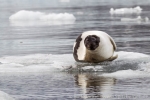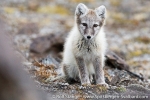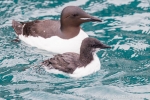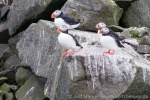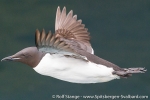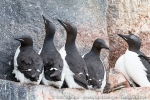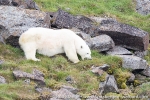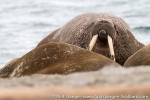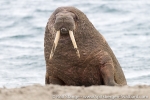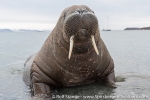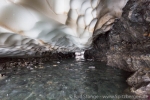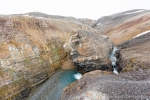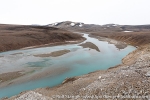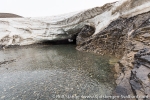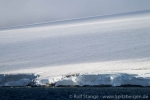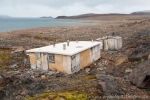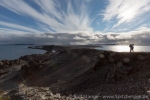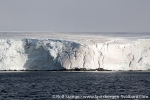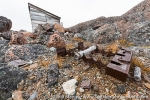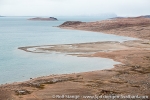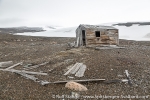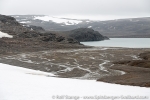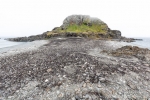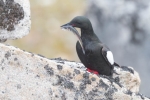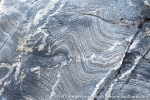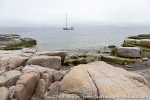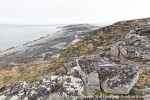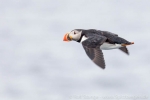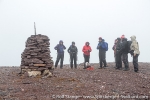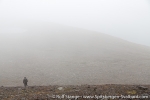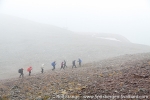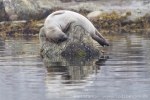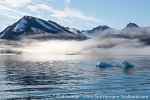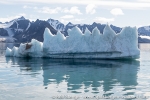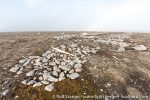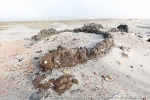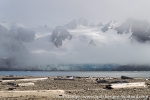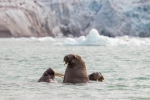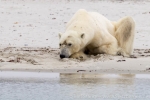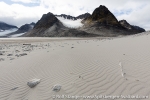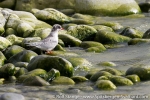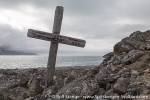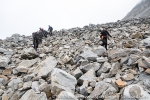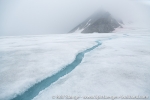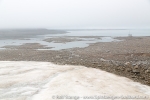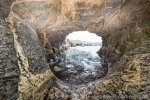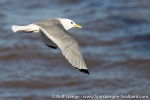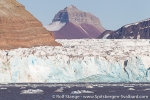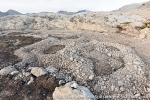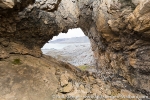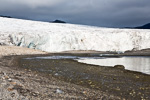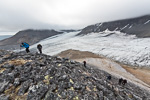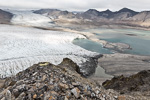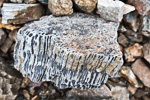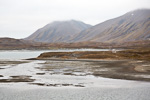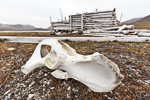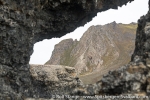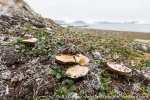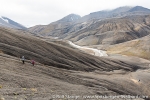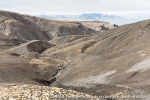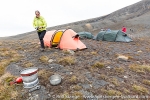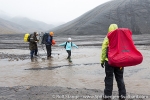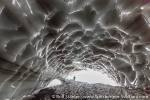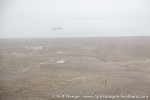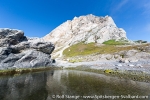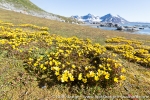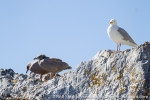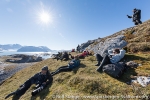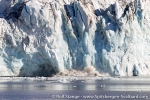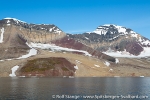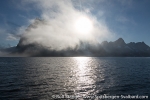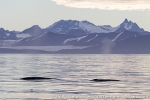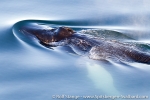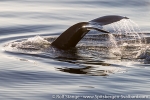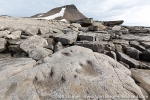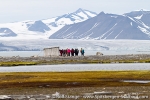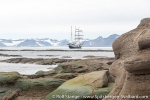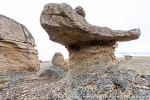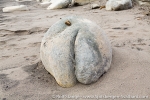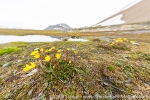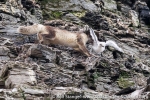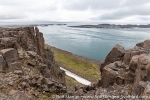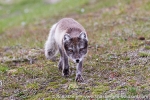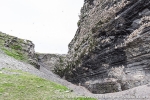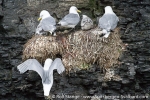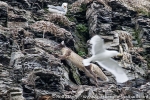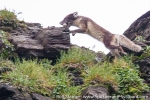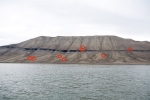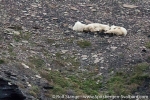-
current
recommendations- Liefdefjord
New page dedicated to one of Spitsbergen's most beautiful fjords. Background information and many photos.
- New Spitsbergen guidebook
The new edition of my Spitsbergen guidebook is out and available now!
- Liefdefjord
New page dedicated to one of Spitsbergen's most beautiful fjords. Background information and many photos.
Page Structure
-
Spitsbergen-News
- Select Month
- June 2025
- May 2025
- April 2025
- March 2025
- February 2025
- January 2025
- December 2024
- November 2024
- October 2024
- September 2024
- August 2024
- July 2024
- June 2024
- May 2024
- April 2024
- March 2024
- February 2024
- January 2024
- December 2023
- November 2023
- October 2023
- September 2023
- August 2023
- July 2023
- June 2023
- May 2023
- April 2023
- March 2023
- February 2023
- January 2023
- December 2022
- November 2022
- October 2022
- September 2022
- August 2022
- July 2022
- June 2022
- May 2022
- April 2022
- March 2022
- February 2022
- January 2022
- December 2021
- November 2021
- October 2021
- September 2021
- August 2021
- July 2021
- June 2021
- May 2021
- April 2021
- March 2021
- February 2021
- January 2021
- December 2020
- November 2020
- October 2020
- September 2020
- August 2020
- July 2020
- June 2020
- May 2020
- April 2020
- March 2020
- February 2020
- January 2020
- December 2019
- November 2019
- October 2019
- September 2019
- August 2019
- July 2019
- June 2019
- May 2019
- April 2019
- March 2019
- February 2019
- January 2019
- December 2018
- November 2018
- October 2018
- September 2018
- August 2018
- July 2018
- June 2018
- May 2018
- April 2018
- March 2018
- February 2018
- January 2018
- December 2017
- November 2017
- October 2017
- September 2017
- August 2017
- July 2017
- June 2017
- May 2017
- April 2017
- March 2017
- February 2017
- January 2017
- December 2016
- November 2016
- October 2016
- September 2016
- August 2016
- July 2016
- June 2016
- May 2016
- April 2016
- March 2016
- February 2016
- January 2016
- December 2015
- November 2015
- October 2015
- September 2015
- August 2015
- July 2015
- June 2015
- May 2015
- April 2015
- March 2015
- February 2015
- January 2015
- December 2014
- November 2014
- October 2014
- September 2014
- August 2014
- July 2014
- June 2014
- May 2014
- April 2014
- March 2014
- February 2014
- January 2014
- December 2013
- November 2013
- October 2013
- September 2013
- August 2013
- July 2013
- June 2013
- May 2013
- April 2013
- March 2013
- February 2013
- January 2013
- December 2012
- November 2012
- October 2012
- September 2012
- August 2012
- July 2012
- June 2012
- May 2012
- April 2012
- March 2012
- February 2012
- January 2012
- December 2011
- November 2011
- October 2011
- September 2011
- August 2011
- May 2011
- April 2011
- March 2011
- February 2011
- January 2011
- December 2010
- November 2010
- September 2010
- August 2010
- July 2010
- June 2010
- May 2010
- April 2010
- March 2010
- February 2010
- November 2009
- October 2009
- August 2009
- July 2009
- June 2009
- May 2009
- April 2009
- March 2009
- February 2009
- January 2009
- December 2008
- November 2008
- October 2008
- August 2008
- July 2008
- June 2008
- May 2008
- April 2008
- March 2008
- February 2008
- April 2000
- Select Month
-
weather information
-
Newsletter

| Guidebook: Spitsbergen-Svalbard |
Home
→
Yearly Archives: 2016 − Travelblog
Storfjord – 15th August 2016
Mon
15 Aug
2016
Now we have to move one, we still have many miles to go to the west coast, up to Isfjord, and to Longyearbyen. We are passing Mohnbukta. The overland trip from there to Longyearbyen would just take a few hours, but that’s another season, another way of getting around … Agardhbukta follows, from here it would be a hike of 4-5 days for strong walkers. That is about the amount of time that we still have for the long trip around the south cape.
My personal memories of the following two days are not quite complete, as we keep steaming through two nights. Initially, Heinrich, Kerstin and I take shifts, which we then reduce to Heinrich and me during the second night so Kerstin can take care of landings, which I am missing. A strange experience for me, but this way we can keep moving, which is important now. How did we make this work until last year, without a second guide? I don’t know.
But we do make landings. In Isbukta, we make an unusual observation: a Harp seal on a piece of glacier ice! Very close to us, the characteristic fur pattern is clearly visible. Then the group makes a hike on shore.
Gallery – Storfjord – 15th August 2016
- gallery anchor link: #gallery_1014
Click on thumbnail to open an enlarged version of the specific photo.
We pass the infamous south cape during the night. Calm seas and reasonable weather allow Heinrich to execute a nautical masterpiece as he is navigating Arctica through through a narrow and shallow passage north of the small islands, saving a good 20 nautical miles on our way to Hornsund. Good thing, as it starts rolling as we reach the west coast.
Straumsland – 14th August 2016
Sun
14 Aug
2016
The Norwegian weather forecast is currently not worth the paper it is written on (and we don’t even print it). We should have been able to sail and make landings comfortably in calm conditions. In real life, we have had quite strong winds last night and today morning, enjoying some real sailing. But even in a lee side position, it was too windy to make a landing today morning.
So we continued southwards out of Hinlopen Strait in order to make use of the precious time, even though it was a bumpy road on the way to Heleysund. So great there is this well-sheltered bay there, what would we do without it? Even there, we spent the afternoon on board, waiting for the wind to settle down, but we did that in all comfort and safety. In the evening, it calmed down and we enjoyed a nice hike around Straumsland, the arctic showing herself in peace and beauty again.
Gallery – Straumsland – 14th August 2016
- gallery anchor link: #gallery_1011
Click on thumbnail to open an enlarged version of the specific photo.
We are steaming southwards in Storfjord through the night. The remaining days are getting fewer and we have to make sure we are getting back to the west coast now. Skipper and guides are taking shifts, passengers act as co-pilots during the night hours. See where we end up tomorrow. Currently we have Mohnbukta in the most beautiful midnight sun light on our starboard side.
Hinlopen Strait II – 13th August 2016
Sat
13 Aug
2016
Miracles of Hinlopen Strait! Today was a day of wildlife. Brünich’s guillemots in amazing numbers – you know the place, we have been there before, more than once. But Alkefjellet is and remains exciting. It is different every time. This time, a lot of the chicks were already on the water, ready to start the long trip to south Greenland together with their fathers.
It is probably less well known where you can find puffins in Hinlopen Strait 🙂
We saw four polar bears today. A mother with a cup up on a hill slope, quite distant. We got a bit closer to this well-fed guy who was spending the afternoon on a very green slope. The veggie food seemed to to him well. Of course we don’t know what else he may have had recently.
Gallery – Hinlopen Strait II – 13th August 2016
- gallery anchor link: #gallery_1008
Click on thumbnail to open an enlarged version of the specific photo.
We do know, however, that people are supposed to keep some distance from walrusses. But nice that the walrusses don’t always know that 🙂
Hinlopen Strait I – 12th August 2016
Fri
12 Aug
2016
After the „nerve-wrecking passage“ (according to the pilot book, Den Norske Los) of Franklinsund, which is largely shallow and mostly uncharted, and some windy miles down into Hinlopen Strait, we made Murchisonfjord our first stop in this area. It is, of course, at the same time still part of Nordaustland. One good reason for going there was meeting the smaller sister ship Arctica I, which had brought some sought-after goods from Longyearbyen including fresh fruit and yoghurt.
The polar desert around Murchisonfjord is made up of very old rocks, which gives those with some background in geology insight in some of the very early chapters of the history of life on earth. Colonies of algae that around 800 million years ago contributed to the content of free oxygen of today’s atmosphere, which we use for breathing and burning fuels and candles. There is a group of geologists on Arctica I doing research on this, and they kindly gave us a short, but very interesting introduction into their work.
Gallery – Hinlopen Strait I – 12th August 2016
- gallery anchor link: #gallery_1007
Click on thumbnail to open an enlarged version of the specific photo.
We got further insight into geology, a snow cave created by a meltwater river and a beautiful little canyon as we ventured out on land.
Nordaustland – 10th-12th August 2016
Wed
10 Aug
2016
10th-12th August 2016 – Exciting days on the north coast of Nordaustland. To the south, there are the large ice caps, and to the north, the Arctic Ocean. Between them, a narrow stripe of barren, ice-free land. It has plenty of rocks and lichens. Anything else is rare or absent.
And yet, there is so much. Impressions that are hard to squeeze into words. Landscapes that have a lot of NOTHING. I don’t mean the absence of anything that could catch the eye or mind. Quite the opposite: there is a lot of something that might be described as NOTHING. Maybe emptyness is another term that makes the point. Any attempt to describe this would soon get bogged down in a long list of stones and rocks, shorelines and glaciers, bays and fjords. Every flower, no matter how small, becomes an attraction, any change of rock catches our attention. It probably doesn’t sound very exciting unless you have experienced the great NOTHING yourself. Many could probably stand in this landscape and wouldn’t experience the great NOTHING, but just see – nothing.
Gallery – Nordaustland – 10th-12th August 2016
- gallery anchor link: #gallery_1005
Click on thumbnail to open an enlarged version of the specific photo.
We happened to visit the Haudegen station, the last outpost of German soldiers during the second world war. A military weather station that was not relieved before September 1945, when a ship came from Norway. Another place we visited was inner Brennevinsfjord, where the Glen expedition from Oxford had a base for their research on the ice cap Vestfonna in 1935-36. The edge of the ice cap is just a few minutes walking away from the shore and it is easily accessible.
Now we are on our way into Hinlopen Strait.
Karl XII Øya, Foynøya – 09th August 2016
Tue
9 Aug
2016
The end of the world! Yeah! Remote, little islands are always something special. There is always something to discover, and you never know what will happen. There are often polar bears on small islands in this area. And, of course, the weather. You need some luck to make things work here.
They could never quite agree if Karl XII Island is one island or two. It was described as two islands after its discovery in the 19th century. Later in the 20th century, both islets grew together, it is said. Now it is definitely two islands. We could have gone through between them by Zodiac. If you cannot get from one end to the other with rubber boots without getting you feet wet, even at low tide, it cannot be just one island. Period.
After having a good look around for polar bears and deciding that the only bear around, which way lying up on a slope several hundred metres away from our prospected landing site, was not too much of a bother, we went ashore. Under these conditions, you can’t walk far from the boat, but there was not much space on level ground anyway, and the one and only hill was obviously already occupied. The number of kittywakes breeding up there is remarkable, there is a constant noise and the slopes under the colony are very lush and green. Together with the dark, rugged rocks and the overall shape of the islands, which is long and narrow, with the only real elevation at the northern end and some lower hill at the southern, it makes a nice miniature version of Jan Mayen.
A dead polar bear and some spread bones are silent but clear witnesses of how hard a bear’s life can be. But the strong one up on the hill is obviously doing well, however exactly he is doing it.
Karl XII Øya and especially Foynøya became famous in 1928 when Nobile’s airship Italia crashed in their vicinity. The famous „red tent“ that housed the 9 survivors of the crash – 6 men disappeared together with the airship – drifted for a while on the ice in this area. Amongst many relief expeditions was a dog sledge party with the Dutchman Josef van Dongen and the Italian Gennaro Sora, who nally became stuck on Foynøya on 04 July; they were rescued on 13 July by a Swedish seaplane. (With this last sentence, I copy myself from my Spitsbergen book, I was too lazy to write a new sentence.)
That brings us to Foynøya, which we explored in the afternoon. The northern end, to be precise. Some artefacts from 1928 are said to be still there, a box and a pistol or whatever. I guess you would need weeks to discover it, turning every stone around, if anything was actually really still there.
Gallery Karl XII Øya, Foynøya – 09th August 2016
- gallery anchor link: #gallery_1003
Click on thumbnail to open an enlarged version of the specific photo.
And there are a lot of stones. Foynøya has got its very own charme. It is obviously a high arctic island, with lots of granite rocks, weathered and broken into large boulders. Black guillemots are sitting and screaming on high cliffs. Some fog banks add to the atmosphere, without obscuring too much of the scenery.
Northern Spitsbergen – 7th/8th August 2016
Sun
7 Aug
2016
7th/8th August 2016 – The day did not just start grey and wet, it also remained grey and wet. We adjusted our day in Raudfjord, which today was a Gråfjord, by making it shorter, just making a little mountain hike to have a view of a cloud from the inside and to stretch our legs a little bit. Then we pushed on to the northeast, the best thing one can do with such a day is enjoying a relaxed afternoon on board while making miles. We reached Sjuøyane after midnight and dropped anchor for some calm hours.
Also Sjuøyane were anything but fog-free today, but visibility was enough for a landing, to visit some walrusses and to make a walk in this high-arctic landscape. We finished the tour a bit earlier, as it turned out that the terrain was occuppied by a polar bear.
Vesle Tavleøya asnd Rossøya are Europe’s northernmost islands, rocks in this sea of fog that does not really want to be an ice sea anymore. But the islands are home to puffins. We saw also some of last year’s juveniles.
Gallery Northern Spitsbergen – 7th/8th August 2016
- gallery anchor link: #gallery_999
Click on thumbnail to open an enlarged version of the specific photo.
We made good use of a breeze by continuing under sail towards the 81st parallel, sailing beyond the edge of most maps on board. Kind of leaving the world behind, for while.
Northwest Spitsbergen – 6th August 2016
Sat
6 Aug
2016
The day started a bit foggy, which is not necessarily a bad thing. You can give it a gentle start, slowly kreep out of the sleeping bag and have a peaceful breakfast without missing anything.
But then the day really took off. The sun started to burn holes into the fog, although the remaining fog banks were largely very decorative. The harbour seals on Danskøya turned out to be reliable, and so did the 17th century graves and blubber ovens on Amsterdamøya. Well, they tend to be less mobile than the seals anyway.
Gallery Northwest Spitsbergen – 6th August 2016
- gallery anchor link: #gallery_997
Click on thumbnail to open an enlarged version of the specific photo.
The little auks in their colonies here in northwestern Spitsbergen are semi-mobile, with their seasonal migrations, but still more mobile than a blubber oven that has been stationary for about 400 years. Now in August, most of them were gone (the little auks, not the blubber ovens). But even if there hadn’t been a single one at all: the two blue foxes would have been more than worth making that landing alone!
Magdalenefjord – 5th August 2016
Fri
5 Aug
2016
Around mid-day we had reached Magdalenefjord. Going into Magdalenefjord was not even part of the plan, but as we don’t really have a plan, it didn’t really matter … we keep making decisions as we go along the way, and as it was quite foggy further north, but clear in Magdalenefjord, this decision was an easy one.
During a first little walk on a nice sand beach (no, not Gravneset), we saw arctic turn chicks, maybe flapping their wings today for the first time, doing their first metres in flight … the first of many million more to come, they will spend most of their life migrating back and forth between the Arctic and the Antarctic. So little animals, such an amazing life. Some walrusses were swimming around, with a glacier front providing a good background.
Not far away, a polar bear was resting on the shore. We had a good, reasonably close look at it. It just lifted its head, not giving a sh… about our presence. Or anybody else’s presence. There was about half a dozen of boats drifting or anchoring in that bay, crowding the place. Not that it bothered the bear much. But the place was overcrowded, well, it has been very crowded for more than a 100 years there, it is nothing new. But nothing we would want to be part of, so we left soon and headed on.
Gallery Magdalenefjord – 5th August 2016
- gallery anchor link: #gallery_995
Click on thumbnail to open an enlarged version of the specific photo.
We left Magdalenefjord in good style: hiking. Hundreds of thousands of tourists have been there over the decades, but few have done that, leaving not on a ship, but on foot. We made a nice glacier passage to the north. On the way to the glacier, we passed a polar bear just a few hundred metres from us. We could only see it when we had already passed it. It was lying further up on the slope, watching us for a moment, then laying its head down again, not taking any further notice of us at all. Good. We went our way up on the glacier, up into the fog, the mountains occasionally coming out between fog banks … a mystery atmosphere, small meltwater streams running down the glacier, disappearing into the ice in large holes. The combination of a glacier, a polar bear and fog made this tour quite unforgettable.
Kongsfjord – 04th August 2016
Thu
4 Aug
2016
After a quiet morning on board with great views of the hanging glaciers on Prins Karls Forland and a bit of geological infotainment (what a stupid word! It was a presentation, or a lecture, if you prefer that. Period.) we reached Kongsfjorden. Both Kongsfjordbutikken and airship mast have a remarkable drawing power also for advanced Spitsbergen travellers. And we want to re-fill diesel anyway, to be able to reach the remotest parts of the Svalbard archipelago should the opportunity arise. We will see what the weather tells us to do.
The great weather with light exactly from the right direction made an excursion to the glaciers almost mandatory. Arctica II under sail near Kongsvegen, some of Spitsbergen’s most impressive mountains in the background, all in sunshine, and then a big calving just behind the boat. An amazing scene, a spectacle, almost too much for the senses.
The weather is still fine, but supposed to turn to the worse tomorrow. So we ignore time and tiredness but head of for some good hiking on Blomstrandhalvøya. Well-known terrain, you should think. But even here, there is always something new to discover. One group takes off for some mountain hiking, enjoying fine views of the surrounding glaciers and mountains from an elevated position. The others do some caving. Not without success.
Gallery Kongsfjord – 04th August 2016
- gallery anchor link: #gallery_993
Click on thumbnail to open an enlarged version of the specific photo.
It is late as everybody comes back on board. Breakfast is delayed next morning and not really synchronized. We are already back to the west coast, heading north, as we get up one by one.
Trygghamna – 03. August 2016
Wed
3 Aug
2016
So we are off again, this time with Arctica II. Sixty feet of steel, 12 souls inside, including skipper and boat owner Heinrich from Longyearbyen, Kerstin Langenberger as guide and me. Yes, this year we have got two guides on board.
Pizza from the pub in Longyearbyen is the first highlight on board, and then we sail out of the harbour. There is still a moderate breeze blowing in Isfjorden, so we can get used to life at sea a bit. Not too much, but enough for some. Not too long though, it is getting calmer again as we approach the northern side of Isfjord and it is calm as a lake as we are getting into the sheltered bay of Trygghamna.
The highest mountain tops are in clouds as we wake up next morning, but it is nice, clear and dry, so we start for a little mountain hike. Knuvlen is a tempting little top, just 325 metres high but with great views of surrounding glaciers, mountains and the fjord. The view is worth every single one of the many rocky metres.
Gallery Trygghamna – 03. August 2016
- gallery anchor link: #gallery_991
Click on thumbnail to open an enlarged version of the specific photo.
It is getting grey as we continue into Forlandsund. We enjoy views of the coast as we pass Daudmannsodden nearby, but then it is a good opportunity to rest a bit, to read, to sort pictures … until we drop anchor in a little bay at Prins Karls Forland for a calm night. We took the opportunity for a little evening walk, discovering the tundra with the colours of some late flowers and the remains of a hunter’s cabin, once solidly built with driftwood logs, a material otherwise rarely used for that purpose.
Bellsund – 28th/29th July 2016
Thu
28 Jul
2016
28th/29th July 2016 – The thin layer of fog that had cast such magical light effects over Hornsund yesterday had grown over night into a solid, low lying cloud cover, making the world appear much more grey than it had been yesterday. But both the little impressions of the colourful tundra as the views from elevations are as beautiful as we had been hoping for.
We go separate ways at least for a while in the afternoon. While one group is visiting a bird cliff, making friends with little auks, polar foxes and reindeer with huge antlers, another group is crossing Nathorst Land from north to south. Yellow and red fragments of claystone are lying on the black and soft ground, while we are working our way up the hill, enjoying wide views over Van Mijenfjorden with Akseløya, Fridtjovbreen and Reindalen. Small, but deeply incised tributary valleys require extra effort and sweat, until we have reached the highest part. Down a steep slope, and soon the tents are standing on a bit of tundra, exactly where each and every raindrop has to make his decision: north to Van Mijenfjord or south to Van Keulenfjord. We enjoy a nice evening in beautiful surroundings and with good atmosphere while the cookers are humming.
We awake to the sound of raindrops on the canvas. The rain is not strong, but enough to make the world around as grey and wet. We follow a little valley, frequently changing from one side of the little stream to the other, while it is getting bigger with every tributary weather.
Gallery Bellsund – 28th-29th July 2016
- gallery anchor link: #gallery_989
Click on thumbnail to open an enlarged version of the specific photo.
A little glacier on the side has a huge surprise for us. A little hole of a small meltwater river turns out to be a huge cave inside. Ice is glittering far above us and to our sides, a wonderful world. We go 20 metres, 30 metres, the end is in darkness. An impressive place.
Outside, it remains wet and grey. We find some watersfalls along our way and finally we are happy as Antigua’s masts appear from the fog.
Hornsund – 27th July 2016
Wed
27 Jul
2016
The famous female trapper Wanny Woldstad wrote about Hornsund that it is too beautiful to describe, you have to experience it yourself. This is certainly true on a day like this.There are no words for this, I leave it up to the pictures.
Gallery Hornsund – 27th July 2016
- gallery anchor link: #gallery_987
Click on thumbnail to open an enlarged version of the specific photo.
Storfjord – 26th July 2016
Tue
26 Jul
2016
The wide-open Storfjord, often a very unpleasant stretch of water, is lying like a mirror around us. After a late breakfast – the polar bear show kept us busy for a good part of the night – we reached Spitsbergen’s east coast and dropped the anchor. When you have the rare opportunity to step ashore on this exposed coastline, you just have to use it! The rocky coastline is a landscape very much on its own, it looks as if someone had built a wall, but it is all nature. Some of the huge blocks show tracks of dinosaurs that were roaming here when this was still a wide, wet delta area in the lower Cretaceous. Other rocks have been turned to mushrooms and columns by erosion.
Gallery Storfjord – 26th July 2016
- gallery anchor link: #gallery_973
Click on thumbnail to open an enlarged version of the specific photo.
We continue over flatcalm sea, the water appears oily, fulmars are mirrored, whale blows are going up, long backs are breaking through the surface. Spitsbergen’s east coast is stretching all over the western horizon, mountains and glaciers, glaciers and mountains. The clouds are backing out, and the sun is calming warm evening light over the whole scenery. What a night!
Heleysund & Freemansund – 25th July 2016
Mon
25 Jul
2016
Compared to the barren polar desert of Nordaustland, the lush-green tundra around Heleysund is a different world. The rock columns of basalt remind of wild west country. Inland, flower carpets with saxifrages and Svalbard poppy are stretching between the rocky hills, while strong tidal currents are rushing though the channels. We hike around Straumsland and then we cruise through Ormholet; at slack tide, it is just calm enough.
Some hours later, we reach Freemansund. A polar fox is stealing eggs and chicks from nests in a bird colony. The country around it turns out to be a polar bear hot spot: more than 14 bears are lying or walking around on slopes, most of them on one single mountain side. A true polar bear parade!
Gallery Heleysund & Freemansund – 25th July 2016
- gallery anchor link: #gallery_971
Click on thumbnail to open an enlarged version of the specific photo.
These Freemansund-polar bears are a phenomenon and a mysterium. Samples of their droppings may help to answer the question what makes this area so unusually attractive for them. My claim for fame in polar science.
News-Listing live generated at 2025/June/16 at 14:59:40 Uhr (GMT+1)
